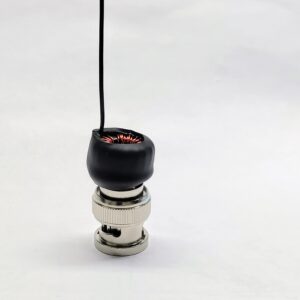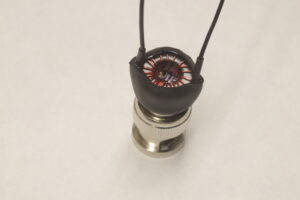IMPORTANT: Build instructions have CHANGED, so please follow what is posted here.
The YouTube build video shows the build using an older version of the PCB built using different instructions.
| QRP/20w 49:1 EFHW | QRP/20w 9:1 Random Wire | QRP/20w 1:1 Balun | QRP/20w 4:1 Unun OCF Dipole | 100w 49:1 (EFHW) 9:1 (EFRW) | EZ Match 49:1 (EFHW) 9:1 (EFRW, etc) 4:1 (OCF Dipole, etc) 1:1 Balun | Mini-Mic Kit | KH1 Paddle |
Which build?
End fed antennas are fantastic for portable use. With no feed line required, end fed antennas pack small but still offer solid performance. Two types of end fed antenna matching units, or a 1:1 balun can be built from this kit, each with its own niche. So, which one should you build?
| QRP Kit | 20w Kit | 100w Kit | EZ Match | |
|---|---|---|---|---|
| Build Options: | 49:1 (EFHW) 9:1 (EFRW, etc) 4:1 (OCF Dipole, etc) 1:1 Balun | 49:1 (EFHW, etc) 9:1 (EFRW, etc) 4:1 (OCF Dipole) 1:1 Balun | 49:1 (EFHW) 9:1 (EFRW) 4:1 (OCF Dipole) | 49:1 (EFHW) 9:1 (EFRW, etc) 4:1 (OCF Dipole, etc) 1:1 Balun |
| Connector: | BNC Male BNC Female SMA | BNC Male BNC Female | SO-239 | BNC Male BNC Female |
| Max Power: | 5w Max (100w as a 1:1 Balun) | 20w Max | 100w Max | 10-20w |
End Fed Half Wave (EFHW)
The EFHW is a resonant antenna that can be used without a tuner. These antennas are also resonant on each half-wave multiple, so a 40m EFHW will be resonant (or close to it) on 20, 15, and 10m as well. The reality is that some antenna trickery is typically required to optimize the tuning of those additional bands. We’ll cover the options later.
EFHW Radiation Pattern
An EFHW antenna radiates almost identically to a dipole set up in the same orientation – typically an inverted V.

End Fed Random Wire (EFRW)
The EFRW is a non-resonant antenna intended for use with an antenna transmatch unit (ATU), also known as a “tuner.” This design is particularly well-suited for QRP radios such as the Elecraft KX2 or KX3 and the Xiegu X5105. Because the EFRW is not resonant on any particular amateur band, the impedance is such that they are tunable to virtually all bands for which the radiating wire is at least about ⅜ wavelength long.
EFRW Wire Lengths and Radiation Pattern
It’s worth noting that “random” wire antennas are not actually “random.” Specific wire lengths must be selected to avoid resonance on any band to ensure tunability on all bands. While many lengths can be selected, typically, a 17’ counterpoise is used with a radiating element of 41’, 60’, or 72’. Additional info can be found here: https://udel.edu/~mm/ham/randomWire/. Longer wires tune more readily on the lower bands and give a bit of gain on the higher bands in lobes diagonal to the wire. EFRW antennas are typically slightly less efficient than a similarly sized EFHW due to losses in the tuner. They are also more prone to RFI issues.
